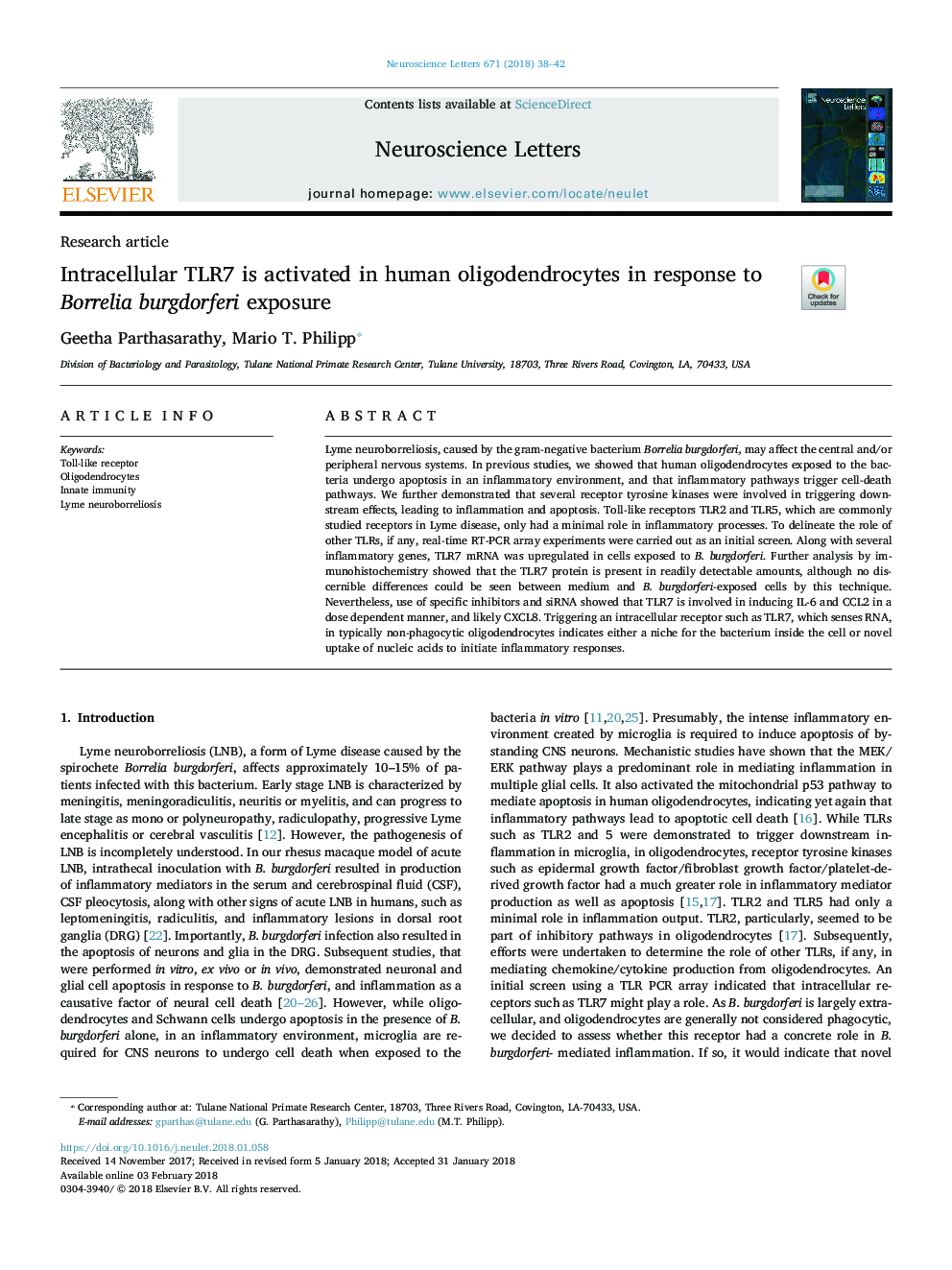| Article ID | Journal | Published Year | Pages | File Type |
|---|---|---|---|---|
| 8841655 | Neuroscience Letters | 2018 | 5 Pages |
Abstract
Lyme neuroborreliosis, caused by the gram-negative bacterium Borrelia burgdorferi, may affect the central and/or peripheral nervous systems. In previous studies, we showed that human oligodendrocytes exposed to the bacteria undergo apoptosis in an inflammatory environment, and that inflammatory pathways trigger cell-death pathways. We further demonstrated that several receptor tyrosine kinases were involved in triggering downstream effects, leading to inflammation and apoptosis. Toll-like receptors TLR2 and TLR5, which are commonly studied receptors in Lyme disease, only had a minimal role in inflammatory processes. To delineate the role of other TLRs, if any, real-time RT-PCR array experiments were carried out as an initial screen. Along with several inflammatory genes, TLR7 mRNA was upregulated in cells exposed to B. burgdorferi. Further analysis by immunohistochemistry showed that the TLR7 protein is present in readily detectable amounts, although no discernible differences could be seen between medium and B. burgdorferi-exposed cells by this technique. Nevertheless, use of specific inhibitors and siRNA showed that TLR7 is involved in inducing IL-6 and CCL2 in a dose dependent manner, and likely CXCL8. Triggering an intracellular receptor such as TLR7, which senses RNA, in typically non-phagocytic oligodendrocytes indicates either a niche for the bacterium inside the cell or novel uptake of nucleic acids to initiate inflammatory responses.
Related Topics
Life Sciences
Neuroscience
Neuroscience (General)
Authors
Geetha Parthasarathy, Mario T. Philipp,
